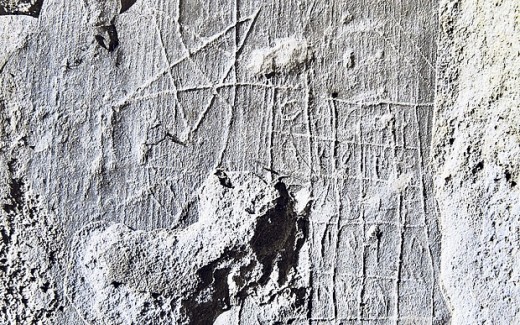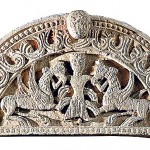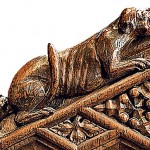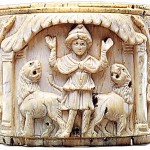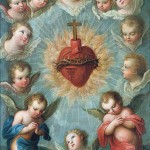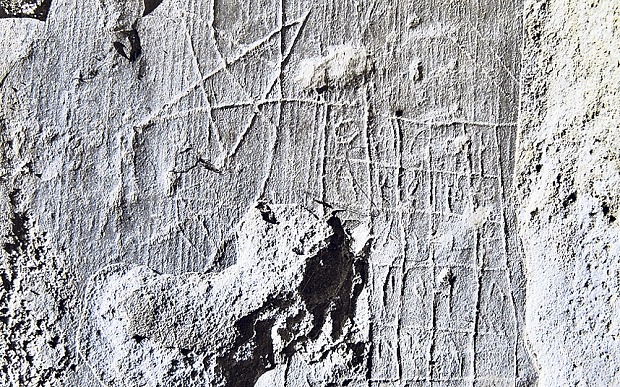unique historical Sator-Rotas phrase-sq. revealed
no person is aware of the that means of this cryptogram, but Bari Hooper has discovered one in a medieval church

an exhilarating discovery has been made in regards to the interesting palindromic phrase-square that goes:
SATOR
AREPO
TENET
OPERA
ROTAS
It reads up and down, backwards and forwards. but what does it mean?
Arepo shouldn’t be a Latin phrase like the others, however, as David Sherlock, an archaeologist who’s an expert on the word-sq., told me, it has been wrestled right into a which means: “The sower Arepo holds with effort the wheels.” Wheels have no obtrusive reference to sowing, so we aren’t so much further ahead.
but a man who has made Essex churches his learn about for many years, Bari Hooper, has found out an instance of the Sator sq. scratched on the wall of the church of St Barnabas, Alphamstone. The lettering has a 16th-century kind, and it could be the unique example of the Sator sq. inscribed on a church wall.
this is very thrilling for college kids of graffiti. The letters are reasonably naturally made, by using the standards of epigraphy, although laborious to peer in the photograph above. they’re much more straightforward to make out as soon as you know the varieties of every letter. Mr Hooper, who first spotted the graffito as long ago as 1975, has made a drawing,proven right here.

the first letter, s, is the worst fashioned, but then it isn’t simple to scratch an s-shape into stone.
Who scratched the graffito? Mr Hooper factors out that a few other inscriptions in the church had been the work of Nicholas le Gryce, rector of Alphamstone from 1576 to 1593. one among them says: “This chancell used to be repared wyth newe tymber worke with the aid of Nycholas le Gryce, Parson,
Aº 1578.” This was discovered during an Edwardian restoration that found the sedilia, the stone seats for clergy, now reconstructed within the chancel.
The lettering of the Sator inscription here might simply be from the fifteenth century, but even if Le Gryce was accountable, what did he suppose the phrase-sq. supposed? Palindromes are issues that the Renaissance loved playing with. On several fonts (as at Knapton, Norfolk, pictured under), a Greek palindrome NIPSON ANOMEMATA ME MONAN OPSIN (“Wash the sins no longer most effective the face”) circles the bowl. however the Sator sq. is less simply explained.

Palindrome in Greek on the font at St Peter and St Paul church, Knapton, Norfolk photograph: Stavros1 at en.wikipedia
an impressive truth is that if the letters of the Sator sq. are arranged into PATERNOSTER (the start and identify of the Lord’s Prayer in Latin) written twice in the form of a move intersecting on the N, then there are two A’s and two O’s left over. These may stand each and every aspect or at on the ends, like an Alpha and Omega on the Paschal candle.

Christian connotations of the Sator sq. are in step with the invention in 1931 of three examples of it on the partitions of a Roman garrison at Dura-Europos (deserted within the 0.33 century), now in jap Syria. but Jewish and Mithraic continues to be are also current at Dura-Europos. Mr Hooper factors out that a Sator square has also been discovered at Pompeii, which was once lined over in advert seventy nine, indisputably too early for a Christian inscription there.
In England, examples of the Sator-Rotas sq. were discovered at Cirencester on a section of Roman wall plaster from the fourth century, and in Manchester on a potsherd in a second-century garbage pit. those might be of Christian origin. there’s no telling. If the phrase-square is now and again thought of as a attraction (with a partial parallel in Abracadabra), it is still not possible to recapture the intention of people who wrote it out.
Mr Hooper points out that most church graffiti are symbols (crosses, stars) no longer phrases. he is worried concerning the instability of the stonework where this graffito is scratched and hopes that money will also be discovered for it to be properly protected. i am hoping so too. it’s a attention-grabbing discovery.
Sacred Mysteries: no person is aware of the which means of this cryptogram, but Bari Hooper has found one in a medieval church![]()
Telegraph Columnists: daily opinion, editorials and columns from our big name writers
(183)

